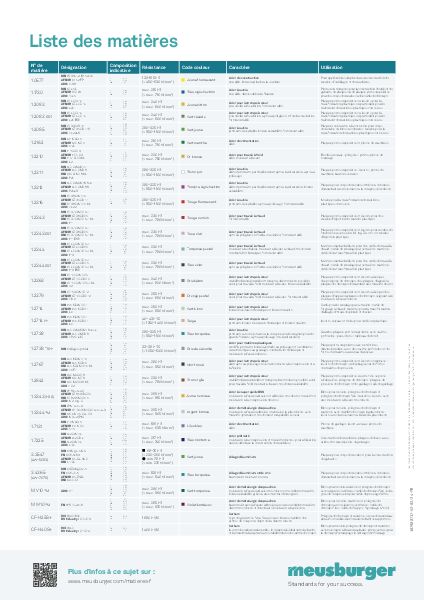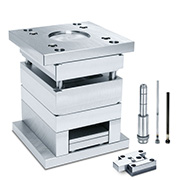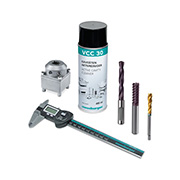Contact
Nous sommes volontiers personnellement à votre disposition du lundi au vendredi de 8:00 à 17:00 heures. Veuillez cliquer sur le lien suivant afin de trouver les interlocuteurs pour votre région.
Siège de Wolfurt
+43 5574 6706-0
Panier {{ (warenkorbCtrl.warenkorb.bestellNummer ? (' [' + warenkorbCtrl.warenkorb.bestellNummer + '] ') : '' )}} | {{warenkorbCtrl.warenkorb.items.length}} Articles Changer le panier
Remarque
| Image | Articles | Pces. | Prix à l’unité | Total | Total remise incluse | |
|---|---|---|---|---|---|---|
|
|
{{warenkorbItem.produktgruppe.produktname}}{{warenkorbItem.bezeichnung | artikelBezFilter:warenkorbItem.attributwertEingaben:[{attrPrefix: 'L_', searchPattern: '/...', replacePrefix: '/', replaceSuffix: ''}] }} {{warenkorbItem.bezeichnung | artikelBezFilter:warenkorbItem.attributwertEingaben}}
{{attributwertEingabe.attributBezeichnung}}
|
|
||||
{{hannexItem.Benennung}}{{hannexItem.Bezeichnung}} |
|
-
Clients
- Construction de moules
- Construction d’outils de découpe
- Construction de machines et gabarits
- Concepteurs
- Moulistes injecteurs
- Produits
- Entreprise
- Carrieres
- Service

Notre gamme sélectionnée permet d’avoir la matière adéquate pour quasiment toute application.
1.2083 / 1.2083 ESU Steel for through hardening
Designation
| DIN: | X 40 Cr 14 |
| AFNOR: | Z 40 C 14 |
| UNI: | - |
| AISI: | 420 / 420 ESR |
Chemical composition:
| C | 0.40 |
| Si | 0.40 |
| Mn | 0.30 |
| Cr | 13.00 |
Strength:
max. 240 HB
(≈ max. 800 N/mm²)
Thermal conductivity at 100 °C:
18 W/m K
Character:
low corrosion, high-alloy, low warpage steel for through hardening with excellent properties for mirror polishing as well as good photoetching, good machinability, high wear resistance and high dimensional stability
Application:
mould plates and inserts for working with chemically aggressive plastics; because of excellent polishing, suitable for optical and medical products
Treatment by
Polishing:
can be polished in the annealed and hardened state; good preliminary surface preparation work is decisive for a good polish
Etching:
good photoetching (graining)
EDM:
in the hardened and tempered condition, treat again for stress relief about 20°C below the last temperature
unusual:
Nitriding, hard chroming
Heat treatment:
Soft annealing:
750 to 800°C for about 2 to 5 hours
slow controlled cooling of 10 to 20°C per hour to about 650°C; further cooling in air, max. 200 HB
Hardening:
1000°C to 1050°C
15 to 30 minutes keeping curing temperature
quenching in oil/compressed gas/hot bath
obtainable hardness: 53 - 56 HRC
Tempering:
slow heating to tempering temperature immediately after hardening;
minimum time in furnace: 2 hours per 20 mm part thickness;
Tempering twice is recommended.
Annealing graph:

Technical tip
- Cold-work steel
- must be tempered several times after hardening (max. 52HRC). The demand for “max. hardness” often ends up in material breakage.
- mould temperature max. 200°C
- corrosion-resistant after hardening
- The ESR quality guarantees an extremely pure and homogeneous microstructure.
Vers l’aperçu de la construction de moules Vers l’aperçu de la construction d'outils de découpe
1.2083 Available in the web shop as:
1.2083 ESR Available in the web shop as:
Data sheet 1.2083 / 1.2083 ESR
Entreprise
Meusburger Georg GmbH & Co KG
Kesselstr. 42
6960 Wolfurt | Austria
+43 5574 6706
office@meusburger.com
@ 2024 Meusburger
 © 2024 by Meusburger Georg GmbH & Co KG | All rights reserved
© 2024 by Meusburger Georg GmbH & Co KG | All rights reserved



 P-Standard plates
P-Standard plates
 Standard bars
Standard bars NR-Round bars
NR-Round bars NE-Blocks for eroding
NE-Blocks for eroding







 Česká republika [CS]
Česká republika [CS]
 Danmark [DA]
Danmark [DA]
 Deutschland [DE]
Deutschland [DE]
 España [ES]
España [ES]
 France [FR]
France [FR]
 India [EN]
India [EN]
 Italia [IT]
Italia [IT]
 Magyarország [HU]
Magyarország [HU]
 México [ES]
México [ES]
 Nederland [NL]
Nederland [NL]
 Österreich [DE]
Österreich [DE]
 Polska [PL]
Polska [PL]
 Portugal [PT]
Portugal [PT]
 România [RO]
România [RO]
 Schweiz [DE]
Schweiz [DE]
 Slovenija [SL]
Slovenija [SL]
 Srbija [SR]
Srbija [SR]
 Suomi [FI]
Suomi [FI]
 Sverige [SV]
Sverige [SV]
 Türkiye [TR]
Türkiye [TR]
 United Kingdom [EN]
United Kingdom [EN]
 USA [EN]
USA [EN]
 Ελλάδα [EL]
Ελλάδα [EL]
 България [BG]
България [BG]
 Росси́я [RU]
Росси́я [RU]
 华 [ZH]
华 [ZH]